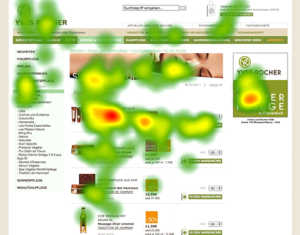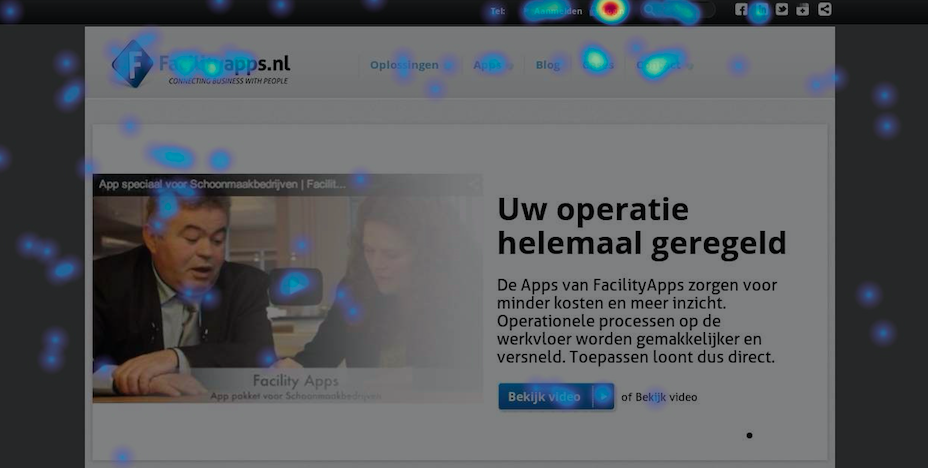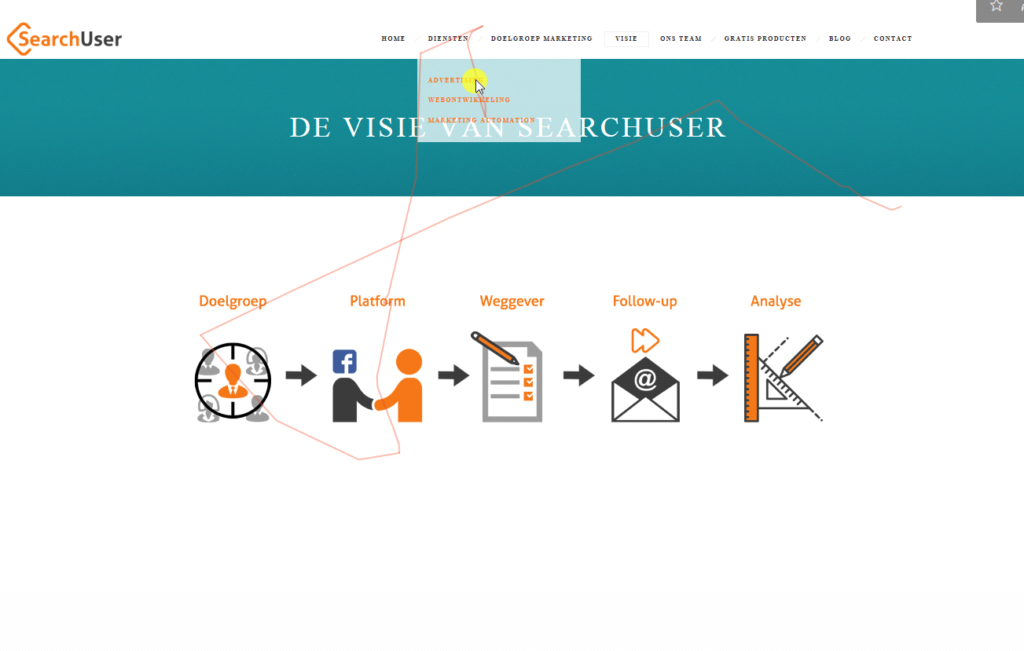Is your website getting more and more visitors but you don't know why they are dropping out at the payment page? Maybe it's time to use Hotjar.
Many marketing agencies are now using Hotjar for their clients - so is SearchUser.
The reason for this is that Hotjar gives you enormous possibilities to analyze the (live) behavior of your website visitor in detail.
So that you can see exactly which elements in your website have a positive impact on conversion, and which elements are redundant or obstructive.
With Hotjar, for one low fee (start = free) you have access to 7 powerful tools, all of which you can use to make the right choices regarding your web design. These 7 tools are: heatmaps, video recordings, funnel analysis, form analysis, surveys, polls and even user testing.
In this blog, you will read about the capabilities of the two most commonly used components: heatmaps and visitor recordings.
In the following blog, you will read how funnel analysis and form analysis can help optimize your website.
Heatmaps let you get to know the users of your website by closely tracking visitors' activities.
3 different heatmaps track those activities, each in a different way. These are the motion heatmap, click heatmap, and scroll heatmap.
Motion heatmap

A motion heatmap shows mouse movement on a page, and is ideally suited to see which elements on your website pages get the most attention from your visitors.
You can compare a motion heatmap to eye-tracking software, which therefore allows you to analyze what people are looking at on your page and more importantly, what they are not looking at.
Do you want a particular text to be read or an image to be the focal point of the page? Then a motion heatmap is a suitable solution.
Once the motion heatmap shows that visitors are moving to the "wrong" elements of the website, or that they are ignoring conversion elements entirely, the website can be adjusted based on this analysis.
Click-heatmap

A click-heatmap shows what visitors click on.
Have you added several conversion buttons on the website but not enough are being clicked? Using this analysis, you can find out what does get clicked on.
If people mostly click on the image instead of the conversion button, this problem can already be solved by another image.
Scroll-heatmap
This heatmap shows how far visitors scroll down. Do you have a long homepage and are curious how many people see the bottom elements? Then this heatmap can help you optimize the page. This way you can test which information is important and therefore read.
Each heatmap has its own strength and specific input. However, a combination of these three heatmaps naturally provides an even deeper analysis.
The click-heatmap and motion-heatmap show what the most important buttons, images and text are for the visitor. This, in combination with the scroll-heatmap shows up to where the page is viewed. This allows you to analyze that important parts should be placed further up because the page is "only" viewed up to halfway.
Step 1: research where the website can be improved (e.g., Google Analytics) and determine what additional insights you want to gain with the use of heatmaps.
Step 2: set up Hotjar's heatmaps on your website and analyze the outcomes
Step 3: modify the website based on these outcomes and turn the heatmaps back on to test the adjustments.
Don't have enough heatmaps and would like to see live what your website visitors are doing? Then using visitor recordings is the way to go.
In fact, visitor recordings allow you to closely monitor your website visitors and adjust the website accordingly.
This allows you to see exactly what website visitors are running into on your website (think about your payment page!).
In advance, you set which website visitors are "important" - for example, if you want to view only website visitors who visited your payment page or your form page. Once a visitor meets this profile description, their visit is recorded so you can view this footage to see how the website is being used by that particular visitor. You can apply visitor recordings to your website in 4 steps:
Step 1: set up target group profile and activate recordings
Determine which visitors you want to record the movements of. The visitors of a certain page, visitors who stay on the website for a certain time, visitors who have visited the website at least 3 times etc.
Step 2: analyze images
The recordings show you the user's screen, allowing you to see what pages they visit, what they find interesting and what they click on. By zooming in on users specifically in this way, you can analyze where improvements can be made.
Step 3: adjust website
Adjust the areas of improvement on the website and start new recordings, this way you can examine whether the changes are having the right effect.
Below is a visitor recording from our own website SearchUser.co.uk

Click here for a visitor recording from SearchUser.co.uk
Are you curious about Hotjar's tools? In the next blog you will read how to see at which step in the conversion tunnel your visitors drop out and how to analyze the forms on your website.
Want to read more about Hotjar? Click here
